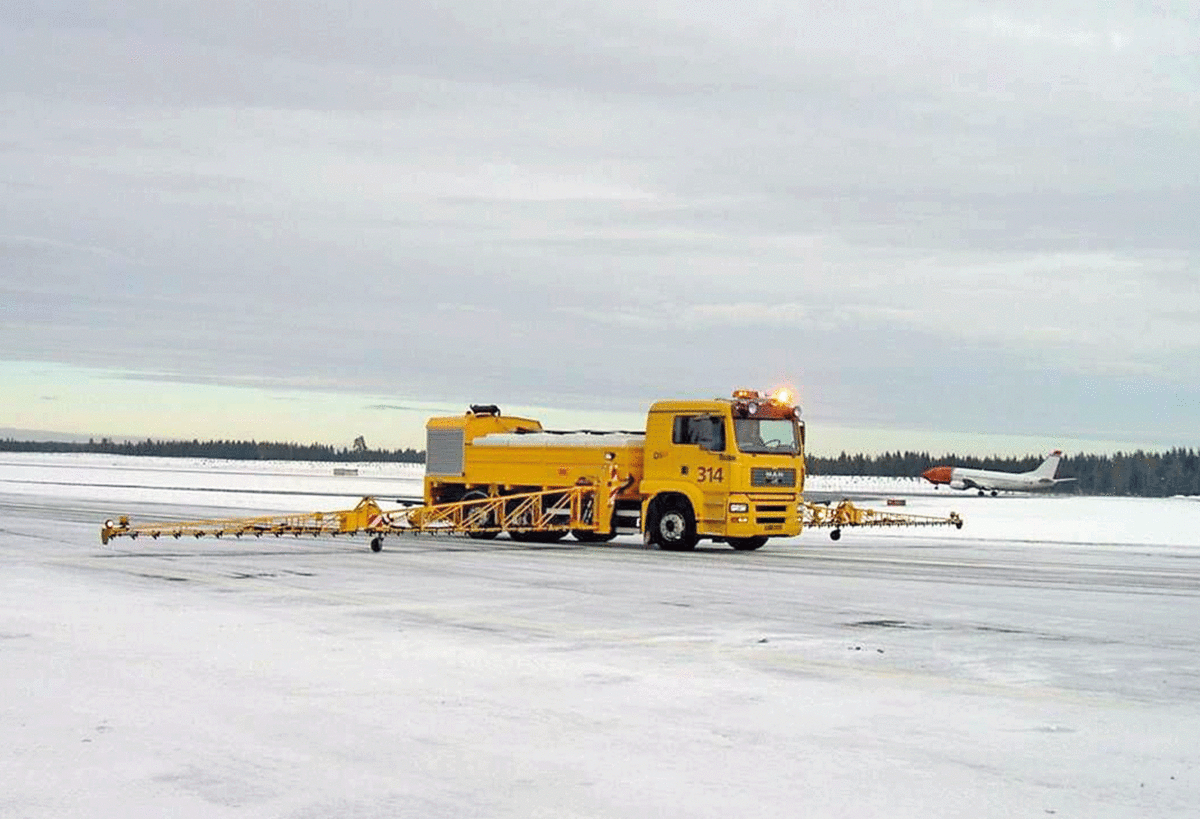Airport Sprayer
The Schmidt Airport Sprayer ASP was developed for de-icing airport runways and taxiways. Its spray nozzles ensure highly accurate dosage of the de-icing liquid. The maximum spraying width is 24 metres.
Construction and Technology
The ASP is comprised of three components: the modular polyethylene fluid tanks and engine, two side-mounted spraying arms with spray nozzles, as well as, a rear-mounted spray bar with spray nozzles. The high-quality, air-injected nozzles are arranged in three rows. Each row is turned on or off depending on the speed and the dosage level. The spraying arms are suspended by means of a special parallel structure. Spring mounted support wheels prevent the spraying arms from coming into contact with the ground through large vibrations. The spraying arms can be completely retracted. The outer section of the spraying arm can also be hydraulically raised. The entire machine is coated with a specially developed corrosion protection. All cavities are air closed. The spray tubes are made of stainless steel. The ASP was specially built for mounting on large carrier vehicles. Its modular design offers a wide variety of assembly options. This means that it can be easily customised to meet the individual needs of the various airports.
In Operation
The ASP tackles icy surfaces using anti-icing and de-icing methods with a road speed related operating speed up to 45 km/h. The rear spray bar has a spraying width of 3 m. Together with the first section of the extended spraying arm, a spraying width of 14 m is achieved. With the addition of the retractable section of the spraying arm, the spraying width extends to 24 metres. Dosage of up to 50 g/m² of the de-icing liquid is made with high precision and a good coverage efficiency. The unique Schmidt low-pressure pump system, with its air-injected nozzles, provides low spraying pressure during operation. The rear nozzles form large drops and are positioned just 300 mm above the surface of the ground. This reduces the swirling caused by turbulence to a minimum. The nozzles are laterally set and close together creating overlapping spraying patterns. Spraying is controlled by the control panel which is very easy to operate and located in the operator’s cabin. This means that both the spraying width and dosage can be regulated quickly and efficiently. Even if an emergency stop at a speed of 45 km/h is made, the ASP’s spraying arms remain in the same position. They are also fitted with impact protection. This enables them to fold backwards and move away upon contact with obstacles.


